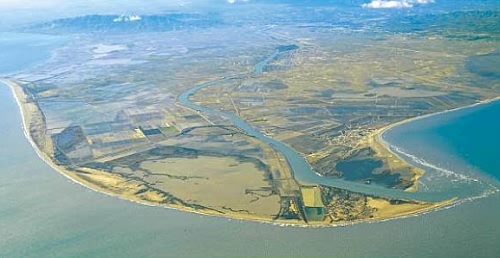| Conflict
on the coast: Platja Llarga, Vilanova
Location: Vilanova
Travel time: 15 minutes
Study time: half day
There are economic benefits and environmental
costs to coastal development which influence the success of the development
equation. Platja Llarga at Vilanova, near Barcelona provides a local case study
where the costs were perceived to outweigh the benefits and development
pressures were blocked by local action.
 |
| Platja Llarga, Vilanova Barcelona (February
2008) |
Platja Llarga was a large area of coastal
wetland and dunes, forming part of the delta of the River Foix. Today, although
badly damaged, it remains one of the last undeveloped sites along the Catalan
coast.
This fieldwork assesses the beneficial economic impacts of the
Platja Llarga development against the environmental costs and examines the views
of stakeholders and their conflicting needs. Field study methodology includes
the use of conflict matrices, cost-benefit and values analysis and environmental
impact assessments. Questionnaires may be used to gather the views of local
residents and businesses.
Platja
Llarga
Greenpeace
Report 2008: Destruction of the Catalan coast
|








